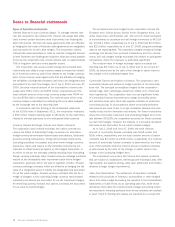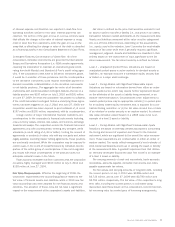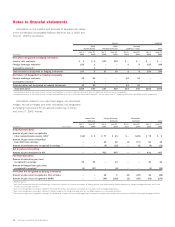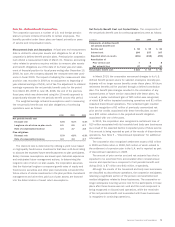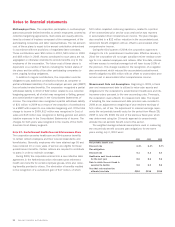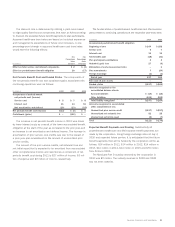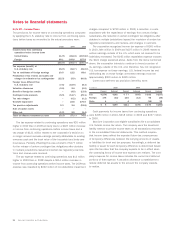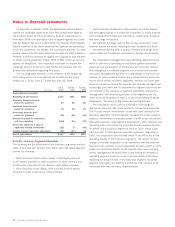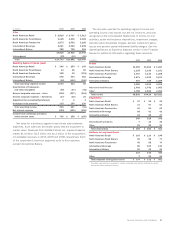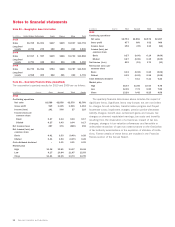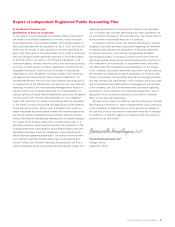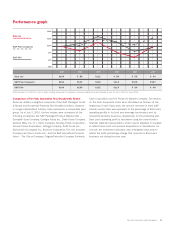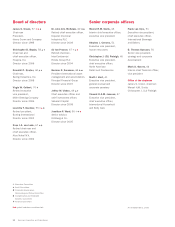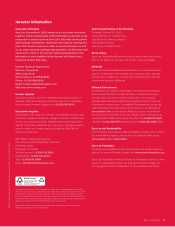Sara Lee 2010 Annual Report Download - page 88
Download and view the complete annual report
Please find page 88 of the 2010 Sara Lee annual report below. You can navigate through the pages in the report by either clicking on the pages listed below, or by using the keyword search tool below to find specific information within the annual report.
Notes to financial statements
86 Sara Lee Corporation and Subsidiaries
As expected, in October 2009, the Spanish tax administration
upheld the challenge made by its local field examination against
tax positions taken by the corporation’s Spanish subsidiaries. In
November 2009, the corporation filed an appeal against this claim
with the Spanish Tax Court. In April 2010, the Spanish Chief Inspector
upheld a portion of the claim raised by the Spanish tax authorities,
which the corporation will appeal. The corporation believes it is ade-
quately reserved for the claim upheld by the Spanish Chief Inspector.
However, in order to continue its appeal, the corporation was required
to obtain a bank guarantee in May 2010 of $80 million as security
against all allegations. The corporation continues to dispute the
challenge and will continue to have further proceedings with the
Spanish tax authorities regarding this issue.
The following table presents a reconciliation of the beginning
and ending amount of unrecognized tax benefits for the years
ended July 3, 2010, June 27, 2009 and June 28, 2008.
July 3, June 27, June 28,
In millions Year ended 2010 2009 2008
Unrecognized tax benefits
Beginning of year balance $«547 $591 $580
Increases based on current
period tax positions 34 28 85
Increases based on prior
period tax positions 39 22 15
Decreases based on prior
period tax positions (32) (30) (32)
Decreases related to settlements
with tax authorities (164) (10) (47)
Decreases related to a lapse of
applicable statute of limitation (25) (7) (46)
Foreign currency translation adjustment (32) (47) 36
End of year balance $«367 $547 $591
Note 19 – Business Segment Information
The following are the corporation’s five business segments and the
types of products and services from which each reportable segment
derives its revenues.
•North American Retail sells a variety of packaged meat and
frozen bakery products to retail customers in North America and
includes the corporation’s U.S.
Senseo
retail coffee business.
•North American Fresh Bakery sells a variety of fresh bakery
products to retail customers in North America.
•North American Foodservice sells a variety of meats, bakery,
and beverage products to foodservice customers in North America
such as broad-line foodservice distributors, restaurants, hospitals
and other large institutions.
•International Beverage sells coffee and tea products in major
markets around the world, including Europe, Australia and Brazil.
•International Bakery sells a variety of bakery and dough prod-
ucts to retail and foodservice customers in Europe and Australia.
The corporation’s management uses operating segment income,
which is defined as operating income before general corporate
expenses and amortization of trademarks and customer relation-
ship intangibles, to evaluate segment performance and allocate
resources. Management believes it is appropriate to disclose this
measure to help investors analyze the business performance and
trends of the various business segments. Interest and other debt
expense, as well as income tax expense, are centrally managed, and
accordingly, such items are not presented by segment since they are
not included in the measure of segment profitability reviewed by
management. The accounting policies of the segments are the
same as those described in Note 2 to the Consolidated Financial
Statements, “Summary of Significant Accounting Policies.”
The corporation incurs various information technology (IT)
and human resource (HR) costs related to its business segments.
The IT costs include amortization of software used directly by the
business segments, intranet website management costs, systems
support, maintenance and project costs. The HR costs include ben-
efits administration, organizational development, labor relations and
recruiting costs incurred by the corporate human resource function
on behalf of the business segments. Prior to 2010, these costs
were included in Other general corporate expenses. Beginning in
2010, the corporation now includes these IT and HR costs in the
operating results of the business segments. The reason for this
change is that the integration of our operations over the past sev-
eral years has resulted in more centralized services, which in many
cases are conducted directly for the benefit of the business seg-
ments. Management believes these costs should be reflected in
operating segment income in order to provide better information
regarding the actual results of the business segment. Business
segment information for 2009 and 2008 has been revised to be
consistent with the new basis of presentation.


